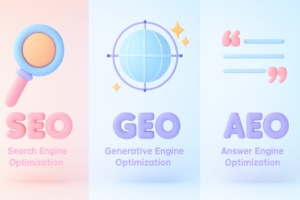In an online space, popularity has turned into one of the best currencies that a brand can possess.
Each tweet, blog and news headline is a drop in a huge sea of social opinion that can either put a brand on the rise or destroy its image within hours.
It is no longer a choice to understand, gauge, and act with this collective feeling, but a strategic requirement.
It is here that media sentiment analysis with media intelligence solutions and media monitoring platforms will prove invaluable to the contemporary brand.
The Media Sentiment Power in the Contemporary Realm
Media sentiment is the feeling or emotion of the tone or attitude toward a brand, person, or issue conveyed in the media content, which is either positive or negative, or neutral.
Sentiment has emerged as a key indicator of brand health as audiences are filling up on information across various platforms, news outlets, social platforms, podcasts, and blogs.
Media sentiment can provide much more information when decoded correctly than any vanity metric like mentions or reach.
It gives insight into the perception that people have towards a brand, what causes their emotions, and how such perceptions change with time. It is an emotional intelligence that enables brands to make a wise decision regarding marketing, PR strategy, and crisis management before perception by people is fixed.
The Mechanism of Sentiment Analysis
Sentient analysis, a branch of natural language processing (NLP), is the core of decoding media sentiment because it evaluates feelings in written, verbal, and even video forms with the help of artificial intelligence.
Here’s how it typically works:
- Data collection – It is initiated by a media intelligence platform or a Media monitoring solution, which collects data containing thousands of sources: news articles, social media posts, forums, etc.
- Language processing – AI systems interpret linguistic patterns -keywords, tone, and context- to identify a sentiment expressed as positive, negative, or neutral.
- Contextual understanding – Advanced tools go beyond polarity and capture nuances such as sarcasm, irony, or ambivalent feelings, providing a more reliable view of brand sentiment.
- Visualization and reporting – The results are then shown using dashboards, which monitor sentiment across time, areas, and platforms so that decision-makers can take action.
This is a repeated process of gathering, interpreting, and acting upon digital noise to create significant business cognition.
The Media Intelligence Solutions in Sentiment Tracking
An effective media intelligence solution incorporates the use of sentiment analysis into more structured monitoring and reporting processes. It binds dissimilar data points together into one, telling a cohesive story.
An example is the buzz-generation surrounding a product launch on Twitter, references in technology blogs, and review videos on YouTube, which are combined in a media intelligence platform.
It then evaluates the general mood of the conversation, whether it is on a positive uphill trend or a cause for concern.
This real-time visibility enables PR and marketing departments to:
- Determine who is an emerging brand proponent/proponent.
- Identify the platforms that are causing the most emotions.
- Early indications of bad press.
- Compare sentiment in comparison with competitors.
- Compare the effect of emotional campaigns and announcements.
In the end, sentiment analysis plus media intelligence services use raw media data to create a brand positioning tool.
The Reason why Brand Success is Defined by the Perception of the Masses
Brand equity is based on the perception of the people. The image of a company determines all aspects, such as consumer trust and investor confidence, as well as recruitment and relationships.
One negative story, unaddressed, can go viral on the Internet, ruining the reputation and affecting sales. On the other hand, brand loyalty, advocacy, and organic reach can be created through positive sentiment.
As an illustration, one may refer to the impact of consumer response on the sustainability efforts that can determine the reputation of a brand.
The audience can be increased by a boom of positive feelings in regards to sourcing ethically or responsibly to the environment. In the meantime, transparency could be compromised and turn such gains in the reverse order.
With the help of media monitoring tools and AI-based sentiment analysis, brands will be able to observe these changes in their initial stages, know their causes, and react accordingly.
Case Study: Converting Knowledge into Practice
Suppose it is a fashion brand in the world that is introducing a new, environmentally friendly line.
Social media fills within hours with responses, some showing support of the step to sustainability, others doubting the truth of the statement.
These patterns are immediately identified by a media intelligence platform and reveal that 65% of the mentions are positive, 25% of them are skeptical about production transparency.
With these insights, the PR team of the brand will be able to:
- Overcome issues using comprehensive sustainability reports.
- Involve influencers who are the vocal supporters of the initiative.
- Clarifying statements to avoid the presentation of misinformation.
This initiative will turn a possible PR crisis into a chance to build the trust and transparency of the brand, expressing how the perception of the sentiment directly influences the business results.
Media Sentiment as a Brand’s Strategy
Effective brands can no longer be based on marketing thrust; they are based on data-driven narration.
The use of media intelligence tools integrated with sentiment analysis will make sure that all campaign and communication decisions are informed by real audience feedback.
1. Reputation Management
Sentiment tracking enables organizations to have a good image since it enables organizations to detect and address reputational threats in real time.
2. PDI Product Development Insights
The media and consumer response can show what needs are not met or what is not liked, and this helps in innovating and improving products.
3. Competitive Benchmarking
The sentiment comparison among competitors will allow the brand to discover the most important things among the audience and change its message.
4. Prevention and Response to the Crisis
Media monitoring solutions in real-time can identify crisis signs early on, and hence the company can take action before the situation deteriorates.
5. Marketing Optimization
The sentiment analysis of campaigns allows the marketing teams to gauge the level of their emotional appeal, as well as to refine their messages to resonate even better.
The Future of Media Sentiment Analysis
Sentiment analysis will get more advanced as AI is developed. In the future, multimedia intelligence platforms will read between the lines and perceive emotion by interpreting multimodal information such as text, tone, facial expressions, etc.
Even upcoming models will predict the shift in sentiments before they happen and will signal the threat or opportunity to the brand through predictive analytics.
Combining it with generative AI will allow it to automatically produce reports so that executives have clear summaries of sentiment changes and proposals.
The most successful organizations in the near future will be those that do not see media sentiment as a reactionary tool, but as an improvement tool that is constantly applied.
Conclusion: A Sentimental and Strategy
The modern, business-driven information ecosystem is moving at a high pace, and to succeed in the business market, a brand must not only know what is spoken, but also how people are affected by it.
Media intelligence services coupled with the state-of-the-art sentiment analysis technology enable organizations to unlock emotion, foresee the public sentiment, and steer smarter policies.
When brands embrace the power of media intelligence solutions and real-time monitoring, they do not respond to the media environment; they influence.
They can open up the potential of their public story by converting raw data into actionable insight that is driven by emotion, and every mention will be a realistic growth opportunity.








